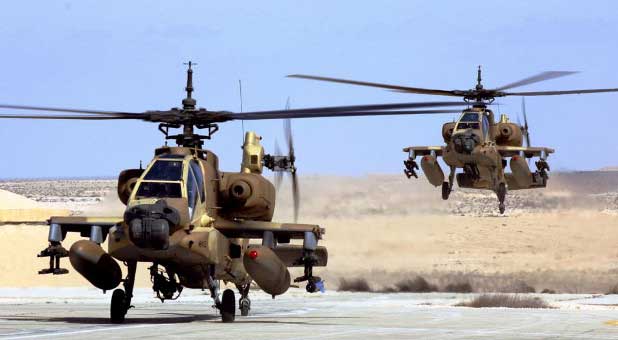The Tactical Airfield Unit, part of the Aerial Transport and Special Training Center, is charged with converting any and every terrain into an improvised airfield in the time of need.
The unit participates in drills with IDF units in every corps and force, working together to provide the necessary ground control for aerial support that only it can provide. The Tactical Airfield Unit is the latest incarnation of the Signalling Unit, which was adapted following its transformation into an operational unit during emergencies.
“The unit is responsible for the entire matter of aerial cooperation with infantry forces on the ground. We are the main connection between the aircraft and infantry soldiers,” Unit Commander Lt. Kobi Limor said. “We turn different territory into areas that allow for the operation of aerial transport, helicopter landings and take offs, and parachute drops. When the need arises to open a tactical air field during war, we are the only ones that are capable of creating it and coordinating the landings—from a lone helicopter, up to dozens of helicopters at the same time.
“We have the ability to establish a kind of small airport in the field. We select the area, arrange it and prepare it in accordance with the kind of aircraft that will land in it.”
The unit’s soldiers also organize aerial transport of equipment in the “cargo rack” method, whereby they take combat equipment like ammunition, food and water and attach it to the body of the helicopter as it hovers above them, allowing it to fly from one point to another without landing.
The unit uses unique tactical equipment, including stationary spotlights to mark landing zones for helicopters and other aircraft in the dark of night. During the day, different signaling measures are required.
“The discipline is moving and developing. All the time, new needs are appearing on the battlefield, and we update our equipment accordingly,” Lt. Limor said. “For example, we are working now on developing a flashlight designed for the force commander. It is a single flashlight, which will be capable of lighting an area wide enough to land a helicopter.”
In addition, the unit was selected to trial new state of the art communications equipment, which has not yet been introduced in the rest of the IDF.
“It is a small and intimate place,” Lt. Limor said, referring to the special nature of the unit. “At the moment just a few dozen soldiers in their regular service are serving in the unit, as well as three reserve companies.”
Once a year, fighters are selected from the various fighting units to join the Tactical Airfield Unit. In order to serve in the unit, soldiers must pass advance combat training, and are treated as combat soldiers in every respect.
Owing to the small size of the unit, the soldiers and commanders develop close personal relationships.
“Due to the fact that we are most of the time in the field, we are unique and have a very close bond,” Lt. Limor said. “It is true that we have a lot of work—but we enjoy it very much.”
Click here for the original article at idf.il.
















































